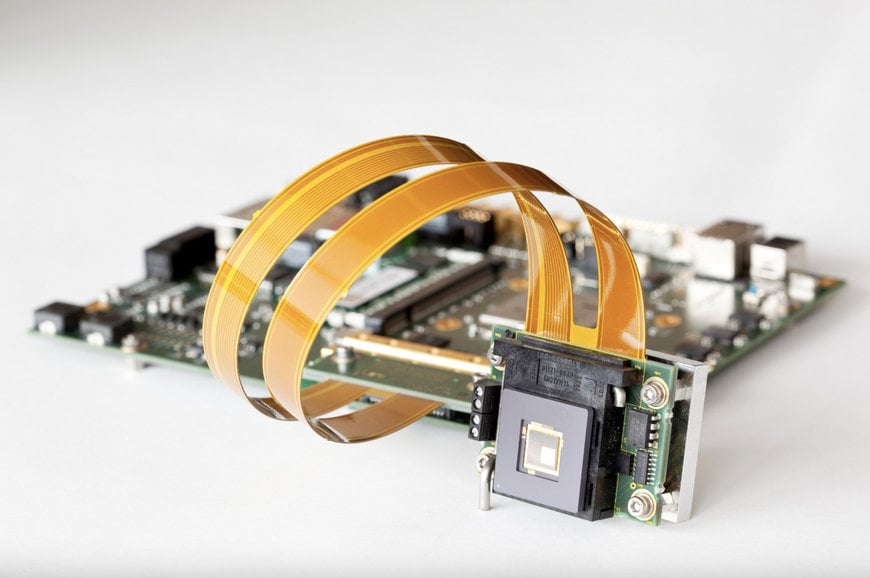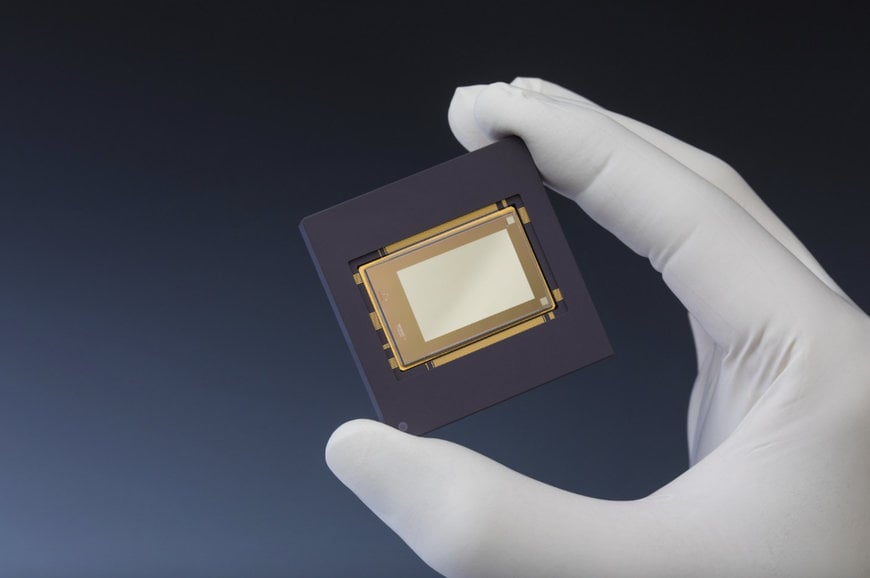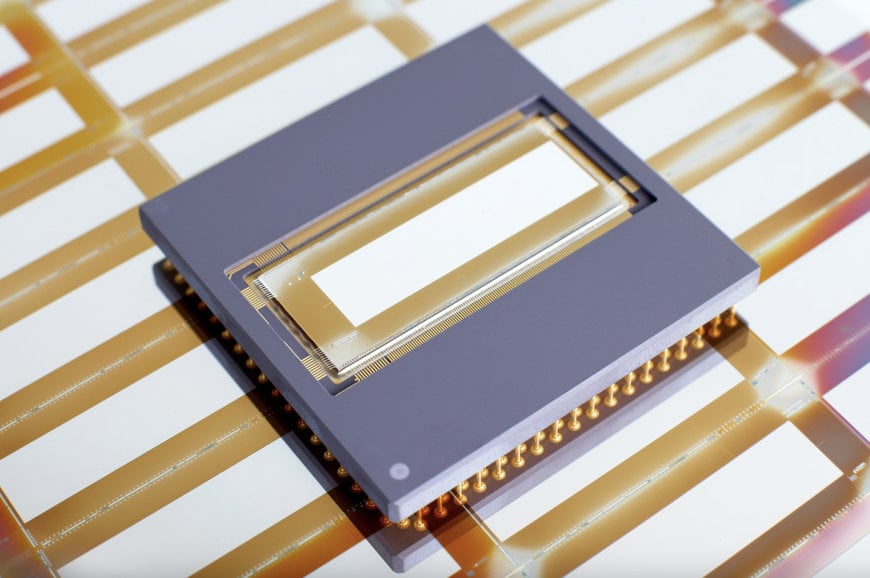electronics-journal.com
21
'25
Written on Modified on
Fraunhofer IPMS’ spatial light modulators enable high-precision applications across industries
Spatial light modulators enable high-precision light projection, material processing, and optical signal transmission, with potential applications in 3D holography, imaging, and biomedical fields.
www.fraunhofer.de

Spatial light modulator customer evaluation kit.
Due to the increasing miniaturization and complexity in the semiconductor industry, but also in many other technical sectors and industries, high-precision and effective ways of projecting light, processing materials or sending optical signals are required - with precision in the nanometer range and high programming speed at the same time. The spatial light modulators of Fraunhofer IPMS already enable applications in the field of semiconductor technology today, thanks to customized tilting and piston mirror systems. They have the potential to become key components for future applications in material processing, 3D holographic display technology or imaging in biomedicine.
A spatial light modulator consists of several million mirrors on a single semiconductor chip. The tiny mirrors form a micromirror array and, depending on the type of mirror, can be tilted along one or two axes or pulled down individually. This allows them to control and manipulate direction, intensity or phase of light. These spatial light modulators are suitable for a wide range of applications.

Spatial light modulator micromirror array in ceramic packaging; 512 x 320 individually addressable 2-axis-tilting mirrors with 48 μm pixel size.
1-axis tilting mirrors enable the generation of optical patterns and the structured illumination of surfaces. Gray level pattern projection is applied for microlithography where patterns are transferred into photo resist. Light modulation in the UV and DUV range is a special expertise of Fraunhofer IPMS. Furthermore, 1-axis tilting mirror devices enable a programmable microscope illumination which can be utilized for a non-destructive investigation of sensitive biological samples.
Spatial light modulators can concentrate broad light beams into strong laser spots. The 2-axis tilting mirrors redirect incident light into a large number of beamlets and enable precise control of their directions with minimal loss of light. They are therefore ideal for applications with high light intensities or efficiencies, such as laser ablation or laser engraving.
Piston mirror arrays can generate holographic 3D images in real time. They are promising key components for real holographic 3D head-up displays. The high-precision piston mirror technology also offers potential applications in the field of adaptive optics or optical tweezers.

Spatial light modulator micromirror array with one million individual mirrors.
Easy technology transfer and novel concepts for customers
In order to enable technology transfer of the systems into applications, Fraunhofer IPMS offers customer evaluation kits with 64k (256x256) mirrors, which contain either tilting or piston mirror arrays. In addition to the micromirror chip, the Fraunhofer IPMS kit includes control electronics and software. Customer support is offered as well.
At SPIE Photonics West, Fraunhofer IPMS will present initial research results on highly integrated 512x320 micromirror arrays with a novel “Piston-Tip-Tilt” actuator concept. In the future, this will open up new possibilities for phase front control up to the mid-infrared range.
Comprehensive presentation at SPIE Photonics West
From January 25 to January 30, 2025, Fraunhofer IPMS was attended the conference and trade fair for photonic technologies - SPIE Photonics West - in San Francisco.
www.ipms.fraunhofer.com
Due to the increasing miniaturization and complexity in the semiconductor industry, but also in many other technical sectors and industries, high-precision and effective ways of projecting light, processing materials or sending optical signals are required - with precision in the nanometer range and high programming speed at the same time. The spatial light modulators of Fraunhofer IPMS already enable applications in the field of semiconductor technology today, thanks to customized tilting and piston mirror systems. They have the potential to become key components for future applications in material processing, 3D holographic display technology or imaging in biomedicine.
A spatial light modulator consists of several million mirrors on a single semiconductor chip. The tiny mirrors form a micromirror array and, depending on the type of mirror, can be tilted along one or two axes or pulled down individually. This allows them to control and manipulate direction, intensity or phase of light. These spatial light modulators are suitable for a wide range of applications.

Spatial light modulator micromirror array in ceramic packaging; 512 x 320 individually addressable 2-axis-tilting mirrors with 48 μm pixel size.
1-axis tilting mirrors enable the generation of optical patterns and the structured illumination of surfaces. Gray level pattern projection is applied for microlithography where patterns are transferred into photo resist. Light modulation in the UV and DUV range is a special expertise of Fraunhofer IPMS. Furthermore, 1-axis tilting mirror devices enable a programmable microscope illumination which can be utilized for a non-destructive investigation of sensitive biological samples.
Spatial light modulators can concentrate broad light beams into strong laser spots. The 2-axis tilting mirrors redirect incident light into a large number of beamlets and enable precise control of their directions with minimal loss of light. They are therefore ideal for applications with high light intensities or efficiencies, such as laser ablation or laser engraving.
Piston mirror arrays can generate holographic 3D images in real time. They are promising key components for real holographic 3D head-up displays. The high-precision piston mirror technology also offers potential applications in the field of adaptive optics or optical tweezers.

Spatial light modulator micromirror array with one million individual mirrors.
Easy technology transfer and novel concepts for customers
In order to enable technology transfer of the systems into applications, Fraunhofer IPMS offers customer evaluation kits with 64k (256x256) mirrors, which contain either tilting or piston mirror arrays. In addition to the micromirror chip, the Fraunhofer IPMS kit includes control electronics and software. Customer support is offered as well.
At SPIE Photonics West, Fraunhofer IPMS will present initial research results on highly integrated 512x320 micromirror arrays with a novel “Piston-Tip-Tilt” actuator concept. In the future, this will open up new possibilities for phase front control up to the mid-infrared range.
Comprehensive presentation at SPIE Photonics West
From January 25 to January 30, 2025, Fraunhofer IPMS was attended the conference and trade fair for photonic technologies - SPIE Photonics West - in San Francisco.
www.ipms.fraunhofer.com

